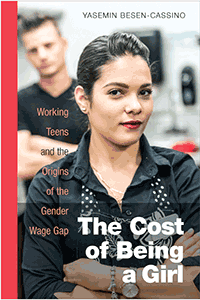
Pay is a persistent problem from many in the labor market and for many women’s lives. A wide range of perspectives have explored this problem. The human capital approach of mainstream economics emphasizes individual differences between men and women in education, skills and job experience in explaining the pay gap. These differences are explained by women’s childcare and domestic duties which result in labor force interruptions.
The occupational segregation approach of sociology, on the other hand, focuses on occupational characteristics and explains women’s lower pay through differences in their occupations, positions and sectors.
No matter how they approach the pay gap, almost every study on the pay gap has one thing in common: they focus on the adult labor force. However, in the United States, most teenagers work sometime throughout high school. Therefore, work experience and potentially the wage gap start long before the completion of education.
In recent research I have examined the teenage work force. By focusing on this group, I include a previously neglected yet substantial portion of our workforce. More importantly, focusing on early work experiences is like a social laboratory where many typical explanations of the wage gap: motherhood, childcare, housework are simply not applicable.
Using a mixed methods approach- statistical analyses using National Longitudinal Study of Youth as well as in-depth interviews with babysitters and retail/service sector workers, I find that when teens are 12-13, boys and girls are paid the same, but the first pay gap starts at 14 and 15 which widens with age.
While some individual factors such as race and age exacerbate the gap, mostly it is explained through girls staying in freelance jobs and boys moving into employee type jobs. Even within freelance babysitting jobs, girls are paid less, given fewer raises in negotiations, have vaguer job descriptions and more unpaid hours than boys. Within service and retail, they have more aesthetic labor requirements (they need to look “right”), accumulate more debt and are placed in more customer oriented positions to deal with challenging customers.
I find that these gender differences are not limited to teenage years, but have long-term effects. Using a longitudinal dataset, I find that decades later, women who have worked in apparel sector make much less in their future jobs and have report feeling overweight.
While we give positive messages to girls at home and have campaigns at schools to foster gender equality in the workplace, the teenagers receive mixed messages when they enter the world of work. With early work experience, they not only experience some of the problems of the workplace such as the pay gap early on, they also internalize some of these problems.

No Comments